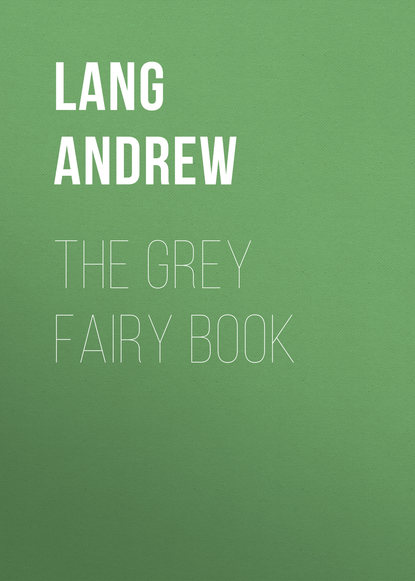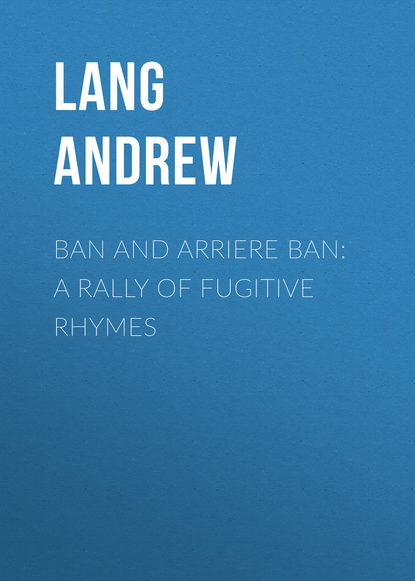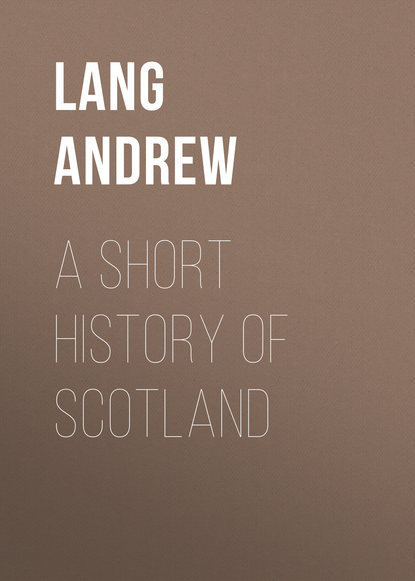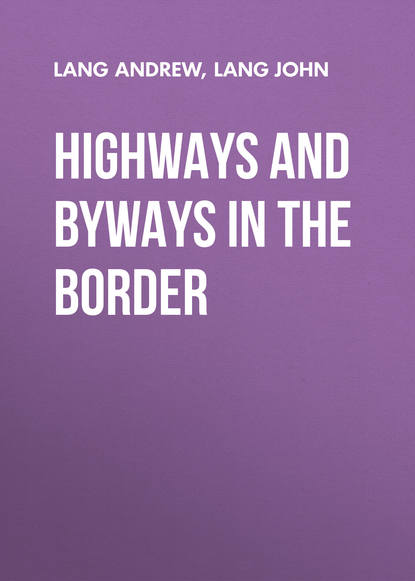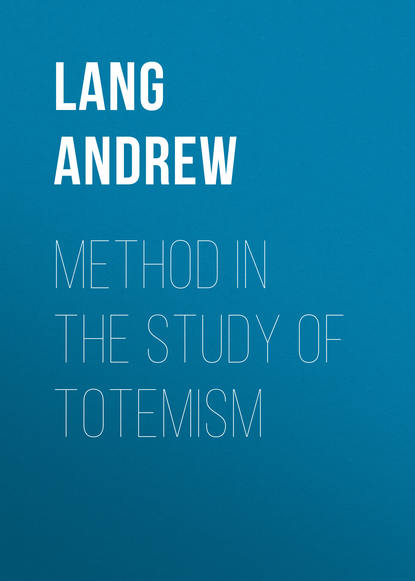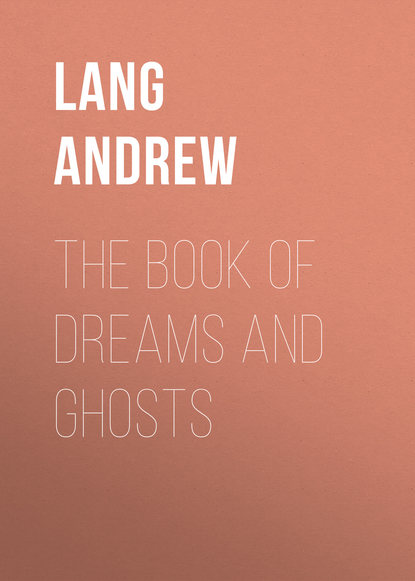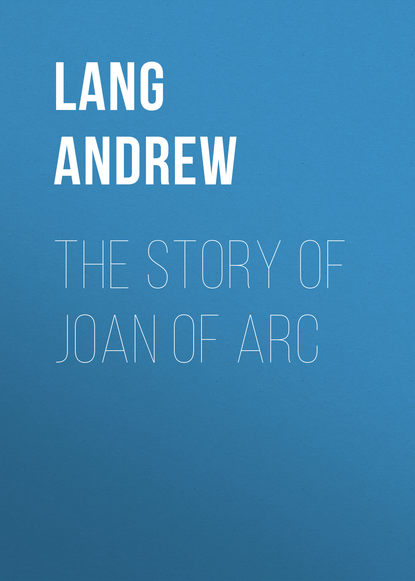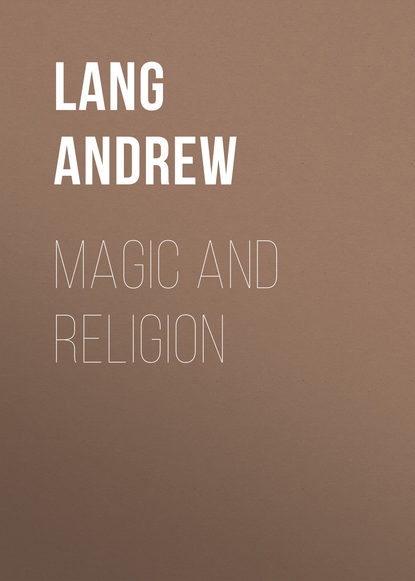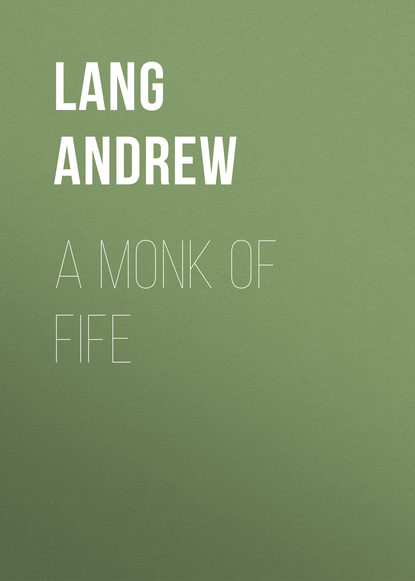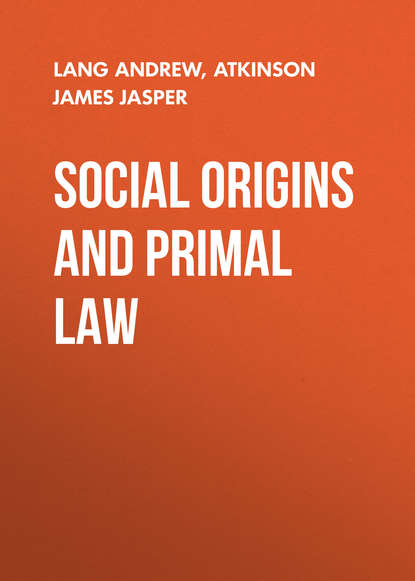
Полная версия
Social Origins and Primal Law

J. J. Atkinson
Social Origins and Primal Law
Dear Annie,
As you first pointed out to me the facts which are the germ of my Theory of the Origin of Totemism, you are one cause of my share in this book. The other is affection for the memory of the author of 'Primal Law.'
Yours always,A. LANG.St. Andrews:
Feb. 13, 1903.
INTRODUCTION
The portion of this book called 'Primal Law' is the work of the late Mr. James Jasper Atkinson. Born in India, of Scottish parents (his mother being the paternal aunt of the present editor), Mr. Atkinson was educated (1857-1861) at Loretto School, then managed by Messrs. Langhome. While still young he settled on certain stations in New Caledonia bequeathed to him by his father, and, except for visits to Australia and a visit to England, he lived and died in the French colony. His ingenious mind was much exercised by the singular laws and customs of the natives of the New Caledonian Archipelago and the adjacent isles. These peoples have been little studied by competent European observers – that is, in New Caledonia. Mr. Atkinson wrote an account of native manners before he had any acquaintance with the works of modern anthropologists, such as Mr. Tylor, Mr. McLennan, Lord Avebury, and others. To these he later turned his attention; he joined the Anthropological Institute, and, in the course of study and observation, he discovered what he conceived to be the 'Primal Law' and origin of morality, as regards the family. In his last illness, in 1899, he was most kindly attended by Commander John Haggard, R.N., then Her Majesty's Consul in New Caledonia. Mr. Atkinson's mind, in his latest moments, was occupied by his anthropological speculations, and, through Mr. Haggard, he sent his MS. to his cousin and present editor. I have given to it the last cares which the author himself would have given had he lived. But I have also taken the opportunity to review, in the following pages, introductory to 'Primal Law,' the present state of the discussion as to the beginnings of the rules regulating marriage among savages.
The discussion is now nearly forty years old, if we date it from the appearance of Mr. J. F. McLennan's Primitive Marriage in 1865. Yet, in spite of the speculations of some and the explorations of other distinguished students, the main problems are still in dispute. Was marriage originally non-existent? Was promiscuity at first the rule, and, if so, what were the origins, motives, and methods of the most archaic prohibitions on primitive license? Did man live in 'hordes,' and did he bisect each 'horde' into exogamous and intermarrying moieties, and, if he did, what was his motive? Are the groups and kindreds commonly styled 'totemic' earlier or later than the division into a pair of moieties or 'phratries'? Do the totem-kins represent the results of an early form of exogamous custom, or are they additions to or consciously arranged subdivisions of the two exogamous moieties? Is a past of 'group marriage' or 'communal marriage' proved by the terms for human relationships employed by many backward races, and by survivals in manner and custom?
These are among the questions examined in the introductory chapters that may be read either before or after Mr. Atkinson's Primal Law. To him I am indebted for the conception of sexual jealousy as a powerful element in the evolution of exogamy.
Since my attention was first directed to these topics, I have felt that a clear and consistent working hypothesis of the origin of totemism was indispensable, and such an hypothesis, with a criticism of other extant theories, is here offered. Throughout I have attempted to elucidate and bring into uniformity the perplexing and confused special terms employed in the discussion. Here it should be explained that by 'marriage' in this work I mean permanent cohabitation of man and woman, sanctioned by tribal custom, and usually preceded by some rite or initiation which does not prelude to casual amours. By family or fire circle I mean the partners to this permanent cohabitation, their offspring, and such kinsfolk by blood or affinity as may be members of their camp. In the first sentence of the book I speak of the family as 'most ancient and most sacred,' and I do so deliberately. The primitive association described I take, with Mr. Darwin and Mr. Atkinson, to be 'most ancient,' and to be the germ of the historic family, which is 'most sacred.' But to 'sacred' when I apply the word to the primitive fire-circle I give no religious sense, such as the Greek hearth enjoyed under Hestia, youngest and oldest daughter of Zeus. I mean that the rules given to the primitive fire-circle by the sire were probably the earliest and the most stringent, though not yet sanctioned by a tabu or a goddess.
Such a small circle, and not a promiscuous horde or commune, I conceive, with Mr. Darwin and Mr. Atkinson, to have been the earliest form of human society.
The book deals only with the institutions of races certainly totemistic, and mainly with the Australian and North American tribes, which present totemism in the most archaic of its surviving forms. But little is said, and that tentatively, on the question as to whether or not the ancestors of the great civilised peoples, ancient and modern, have passed through the stage of totemic exogamy, as our evidence is weak and disputable. Too late for citation in the body of the book I read Mr. A. H. Keane's theory of the origin of totemism.1
Mr. Keane's theory is much akin to my own as it stood in Custom and Myth (1884) and to that of Garcilasso de la Vega, the oldest of all. Garcilasso (1540-1616), an Inca on the mother's side, describing the animal and plant worship of the low races in the Inca Empire, says 'they only thought of making one differ from another and each from all.'2 But it may be that he had not totemism in his mind; the passage is not too explicit.
Mr. Keane says: 'And thus the family, the initial unit, segments into a number of clans, each distinguished by its totem, its name, its heraldic badge – which badge, becoming more and more venerated from age to age, acquires inherited privileges, becomes the object of endless superstitious practices, and is ultimately almost deified… Its origin lies behind all strictly religious notions, and it was at first a mere device for distinguishing one individual from another, one family or clan group from another.3 Thus among the Piaroas of the Orinoco below San Fernando de Atabapo the belief holds that the tapir, originally the totem of the clan, has become their ancestor, and that after death the spirit of every Piaroa passes into a tapir; hence they never hunt or eat this animal, and they also think all the surrounding tribes are in the same way each provided with their special animal fore-father. It is easy to see how such ideas tend to cluster round the clan4 or family totem, at first a distinguishing badge, later a protecting or tutelar deity of Protean form. It should be remembered that the personal or family name precedes the totem, which grows out of it, as seen by the conditions still prevailing amongst the very lowest peoples (Fuegians, Papuans of Torres Strait5).'
I am indebted in various ways to assistance, chiefly in the interchange of ideas, from Mr. A. C. Haddon, Mr. G. L. Gomme, Miss Burne, and Mr. A. E. Crawley, author of The Mystic Rose. Mr. Crawley kindly read the book, or most of it, before publication, and collaborated most efficiently in the way of suggesting objections. It is not implied that any of these students accept the ideas of the two authors. I regret that it has been found impossible to wait for the publication of a new book by Mr. A. W. Howitt, from which we may expect much new information.
The question of the relations of religion and totemism is scarcely touched on in this work. A certain amount of regard is given to their totem animals and plants by some of the Australian tribes, to the extent of not killing, plucking, or eating them, except under stress of need, but even this is not universal. There also exists, in some cases, a sense of kinship with them. They are not worshipped. That magic is worked for their preservation and propagation, as by the Arunta, proves nothing in the nature of a religious attitude towards them. In my opinion this religious regard for the totem does not appear till ancestor worship, which does not occur in Australia, has made considerable advance and a myth arises that an ancestral spirit or family god is incarnate in the animal which originally was only a totem. If so, totemism is not an element in the origins of religion, but a field later invaded by religion.
On the other hand, Dr. Achelis, of Bremen, writes that to savage man 'animals are his equals. To the ancient worship of animals is added, under the influence of sympathetic emotion, the worship of ancestors and totemism, which sees in a beast worshipped as a god the ancestor of the whole tribe.'6 Clearly this sentence is replete with errors and confusions. The whole tribe, in Australia, does not regard any animal as its ancestor. No beast is worshipped as a god. No ancestors are worshipped. If the animals are 'his equals,' why did man worship them, and that apparently before the worship of ancestors and totemism arose? In an essay like that of Dr. Achelis on Ethnology and Religion the facts ought to be correctly ascertained.
I have been obliged to place in Appendix A certain facts about group names derived from animals which came late to hand, among them Mr. Robertson's interesting letter on many such names in the Orkneys, and some remarks on village names derived from animals among the ancient Hebrews.
CHAPTER I
THE EARLY HISTORY OF THE FAMILY
THE FAMILY. THEORY OF MR. ATKINSON
The Family is the most ancient and the most sacred of human institutions; the least likely to be overthrown by revolutionary attacks. In epochs of change the Family naturally invites the attentions of impetuous reformers, like Shelley (who advocated a scheme more than any other apt to shock the conscience of a savage), and like the friends of 'Free Love,' who would introduce a license beyond the Urabunna model. The horror aroused by certain relations, such as that of brother-and-sister marriage, is perhaps the oldest of moral sentiments, yet it has lost its hold of some barbaric races, and has been overcome by dynastic pride, as in the Royal House of the Incas of Peru, and in that of Egypt. While the Family, everywhere almost, has been secured by a religious and all but instinctive dread of certain aberrations, the laws or customs which may not be broken have varied in different lands, and in different stages of civilisation. What is incest in one age or country is innocent in another; still certain unions, varying in various regions, have always been regarded with loathing. No such emotion is known to be felt among the lower animals, and scientific curiosity has long been busy with the question, why should the least civilised of human races possess the widest list of prohibited degrees? What is the origin of the stringent laws that, among naked and far from dainty nomads, compel men and women to seek their mates outside of certain large groups of real or imagined kindred? The answers given to this question have varied with the facts of savage law which chanced to be at each moment accessible to inquirers, and all attempts to solve the problem must be provisional. New knowledge may upset even the most recent theory, and, indeed, new knowledge of the rules of certain Australian tribes has already produced fresh hypotheses, as regards certain aspects of the problem.
The whole subject is thorny, and I must crave pardon for venturing to differ, provisionally, on several important points, from authorities whose learning, research, and experience far exceed my own. The facts which they have collected from personal knowledge of savages, and from reading, often group themselves otherwise in my eyes than in theirs – the perspective is different. My observations, therefore, are submitted to criticism with all diffidence. Only the main lines of a complex discussion are here traversed, and the works cited are, as a rule, either by English-speaking authors, or, at least, are sometimes accessible in English translations. It will be seen that students have differed greatly, not only from each other, but, at different times, from themselves, under the influence of new facts brought in from the most remote and isolated of savage races. One author is most interested in this, another in that, factor of the problem. The difficulty of the subject cannot be exaggerated; for the origins of our human society cannot be historically traced behind the institutions of the races now lowest in the scale of culture. We are driven to risk hypotheses. Again, it is by no means certain that some of these lowest peoples of to-day (say the Arunta of Central Australia) represent a moment in the main current of the stream of tendency, a point through which all progress has passed. The ideas and institutions of such tribes may be mere local 'sports,' other divergencies may have arisen in other quarters, and it would be an error (repudiated by Mr. McLennan, the founder of the study in England) to suppose that, everywhere, exactly the same series of changes evolved itself in due sequence. 'In one place or another everything may have been going on,' I have heard Mr. McLennan observe.
Once more, the subject is obscure because the races apparently 'nearest the beginning,' the naked Australians, houseless hunters, just emerging from the palæolithic condition as regards implements, are, as to society and system of thought, very far from being 'primitive;' very remote from 'the beginning.' Their social rules are various and extremely complex, especially as regards marriage: some of their social customs are perhaps inexplicable – a field for modern guesswork – their speculative philosophy is, in one instance, ingenious, elaborate, and highly peculiar. The 'beginning' lies far behind them, yet their society and institutions may have their germs (on the Darwinian theory) in a state of all but complete brutality.
To trace human institutions back to that hypothetical stage of first emergence from the brute is the purpose of the following treatise, 'Primal Law,' by Mr. Atkinson. It were superfluous for me to dwell on the audacity of his enterprise. Of thoroughly human man we know a good deal: of the brutes we know something. Of a hypothetical creature, not wholly brute, but not yet 'articulate-speaking man,' we know nothing, and as to the ways of his supposed next of kin, 'the great extant anthropoid apes,' our knowledge is vague, resting on the accounts of native observers. Such a creature, however, half ape, half human, is in part the theme of Mr. Atkinson's speculations, on which I venture to express no opinion: as not being persuaded that man ever had such a direct ancestor.
PRIMITIVENESS IN MAN
As to men really primitive, and their social arrangements, I only venture to conjecture that, in the nature of the case, they probably lived a nomadic life, 'selecting a temporary place of abode, whether a cave, rock, shelter, or hut, influenced chiefly by the amount of edible materials to be found in the neighbourhood.'7 The area of the wandering of each group of hearth-mates would be limited, probably, by the existence of other groups, which would resent poaching. A large trout may often be seen to turn angrily and drive away a little trout that has ventured too near the bend of the brook which the large trout finds a good station for flies; and human groups would also, as in cases to be cited they do, mortally resent intrusions. I conceive that the males would be polygamous (like the gorilla) and jealous, killing or expelling the young males, as in the theories of Mr. Darwin and Mr. Atkinson. Thus groups would, on the whole, be hostile,8 'wandering from one locality to another, now gathering fruits and seeds, now hunting wild animals, or, as a last resource, feeding on shell-fish and other produce of the shore.'9 The implements now used by backward savages for fish-catching, nets, spears, and barbed hooks, cannot be precisely primitive. Primitiveness, we must remember, does not depend on antiquity of date.
The Australians, though now their groups have coalesced into local tribes in defined areas, and though their customary law is extremely complex, are least remote from the primitive, least remote, but very far removed. They are, though our contemporaries, infinitely beneath the status in culture of palæolithic man of the mammoth and reindeer period. It is not improbable that he had domesticated the ox, goat, pig, horse, and dog. 'They manufactured fine needles of bone, with which they sewed their skin garments. They adorned their persons with a variety of beads…' Their art was of notorious and amazing excellence. Dr. Munro says that they were 'ignorant of the rearing of domestic animals,'10 but also that 'there seems to be no inherent improbability in the idea that some of them' (ox, goat, horse, pig, and dog) 'had been domesticated by the indigenous inhabitants prior to the coming of the neolithic brachycephals into France.'11 A palæolithic sketch of a horse 'with a supposed cover,' and another of a horse with a bridle,12 may be misinterpreted: Dr. Munro thinks that the horse-cloth 'may be no more than the hunter's skin coat thrown over the back of the animal when led home by means of a halter made of thongs or withes to be there slaughtered.' If palæolithic man had advanced as far as Dr. Munro supposes, it was a short step to the domestication of the horse. It is hardly conclusive to say that, if he had tamed the horse, 'we would undoubtedly ere now have had an equestrian representation of the fact,' though it is also said that 'we have only as yet a preliminary instalment of these most interesting art productions.'13 The representation may later be discovered. That palæolithic man, so far advanced as he was, was 'ignorant of the principles of religion,'14 seems a hasty conclusion. If he had the beliefs of our Australians in such potent beings as Baiame, Nooreli, Daramulun, Mungun-ngaur, Pirmaheal, and Pundjel, that belief would leave no material traces, except, perhaps, the Bull-roarer, whose noise represents the voice of one or other of these beings. Now a small but unmistakeable pair of palæolithic bull-roarers in bone, or of amulets which are bull-roarers in miniature, one of them decorated with the sacred Australian pattern of herring-bone and concentric circles, have been found in a quaternary station in France.15
Palæolithic man in France, countless ages ago, was thus, especially if he had domesticated animals, immensely more remote from 'the beginning' than contemporary wild Australian tribes. They, again, with their copious languages, ingenious implements, complex institutions, and prolonged tribal assemblies, are infinitely in advance of those really primitive men among whom we must tentatively seek the origins of customary law regulating the family and marital arrangements. A society almost incalculably ancient may have been much more advanced than a society of to-day, and the society of the lowest known modern savages must be equally advanced from the status of 'primitive man'.
The best proof of all that no Australians are now in or near 'the chrysalis state' of humanity, is to be found in their combinations into large friendly tribes, each covering a wide extent of country, and holding stated meetings, for social, political, religious, and commercial purposes. Mr. Matthews remarks on 'articles of barter,' exchanged 'at the great meetings which were held for the initiation of the youths of the tribes.' Among these articles were stone hatchets, first chipped, then ground, the tribes having passed out of the stage in which mere rude flaking sufficed. 'At the conclusion of the ceremonies, before the people dispersed, a kind of fair was held, when natives in whose country stone was plentiful, would barter their things with other people for reeds for making spears, rich plumage of birds, &c. … or for any other articles brought by the various tribes for the purpose of exchange.'16 We can scarcely conceive that this amount of tribal or inter-tribal unity was possible to man really primitive. Backward and conservative as the Australians are, we must not expect to find among them, with their highly complex customary laws, anything like the first beginnings of social regulations. To look for these, even among the naked and houseless hunters of Australia, is to organise failure in this research as to origins.
RECENT HISTORY OF THE SPECULATION AS TO THE EARLY HUMAN FAMILY
From the age of Aristotle onwards, inquirers naturally began with a belief in the Patriarchal Family as the original social unit. To this opinion, in a peculiar form, Mr. Atkinson returns, as will be seen. The idea was natural. Aristotle, like Hesiod, starts from 'the Man, the Woman, and the labouring ox,' though men and women were wedded long before oxen and other animals were domesticated. The Biblical account in Genesis opens with the same theory of the primal pair, whose children, brother and sister, must have married each other, as in the late Mr. Morgan's hypothesis of the 'Consanguine Family;' but, contrary to almost universal savage custom, and to Mr. Atkinson's 'Primal Law.'
In 1861, Sir Henry Maine's celebrated book, 'Ancient Law,' appeared. Herein he wrote that it was difficult to say 'what society of men had not been originally based on the Patriarchal Family.17 His studies had lain chiefly in the law of civilised peoples, Romans, Hebrews, Greeks, Irish, and Hindoos; not in the customary law of the lowest races. He, like Mr. Freeman, concluded that the patriarchal family, by aggregation of descendants (and aided by adoption of outsiders, and by the ownership of the family by its Head), formed the gens, while the aggregation of gentes formed the tribe, and the aggregation of tribes made the State. But, as the gentes had traditions contrary to this theory, traditions of separate origins, he supposed that 'the incoming populace should feign themselves to be deduced from the same stock as the people on whom they were engrafted.' Thus we know that McUlrigs (Kennedys) of Galloway joined the remote Macdonnells of Moidart and Glengarry, and wore the Macdonnell tartan18 (1745-1760), and so might come to pass as Macdonnells, though they still regard the Marquis of Ailsa, a Kennedy, as their chief, at least in Eilean Shona (Loch Moidart). In the same way the Camerons of Glen Nevis, though called 'Camerons,' were really MacSorlies, a branch of the Macdonnells, and from the sixteenth century to 1754 were always on ill terms with the chief of the clan Cameron, Lochiel. These are very modern instances, but illustrate Sir Henry's theory of incomers.
The members of the Roman tribes had traditions that they were not, really, of the same original blood with each other. Only by a fiction were they of the same blood. They did not all descend by natural increase from one patriarchal ancestor. There really did exist 'a variety of alien groups in a local tribe,' however they might all adopt the same name, and assert descent, in West Scotland from Somerled, let us say. This fact, of heterogeneousness within the 'tribe' among others, was so obvious and so imperfectly explained, by friends of the Patriarchal theory, that it occupied 'writers belonging to the school of so-called prehistoric inquiry,' as Sir Henry styled it.19 They were not satisfied with the theory that Society arose in the Patriarchal Family, based on direct descent from, and ownership by, a single male ancestor. To be sure a Cameron will 'cross the hill,' and call himself Stewart, and a Chinese immigrant into Australia has discreetly entitled himself Alexander Mac-gillivray. But such accretions, and such legal fictions, do not explain the heterogeneousness of the local tribe, which, by the theory of some historians, is of common descent. 'Prehistoric inquirers' could not but notice that, among ruder 'non-Aryan' races of various degrees of culture, 'the family is radically different from the Patriarchal Family,' and suggests a different origin.
Roughly speaking, the groups of real or fancied kindred among various low races exhibit the peculiarity that the kin-name is often inherited from the mother, not from the father; that the maternal blood is stronger in determining such cases of inheritance as arise; and that marriage is forbidden within the recognised limits of the maternal kinship. It was natural for inquirers to derive this condition of affairs, this reckoning in the female line, from a state of society in which fatherhood (owing to promiscuity, or to polyandry – several husbands to one wife) was notably uncertain. Bachofen, who first examined the problem, attributed the system to a supposed period of the Supremacy of Women: McLennan to dubious fatherhood, and possible early promiscuity. The recovery of supremacy by men, or the gradual advance in civilisation, especially in accumulation of property, would finally cause descent to be reckoned through the male line, as among ourselves.



